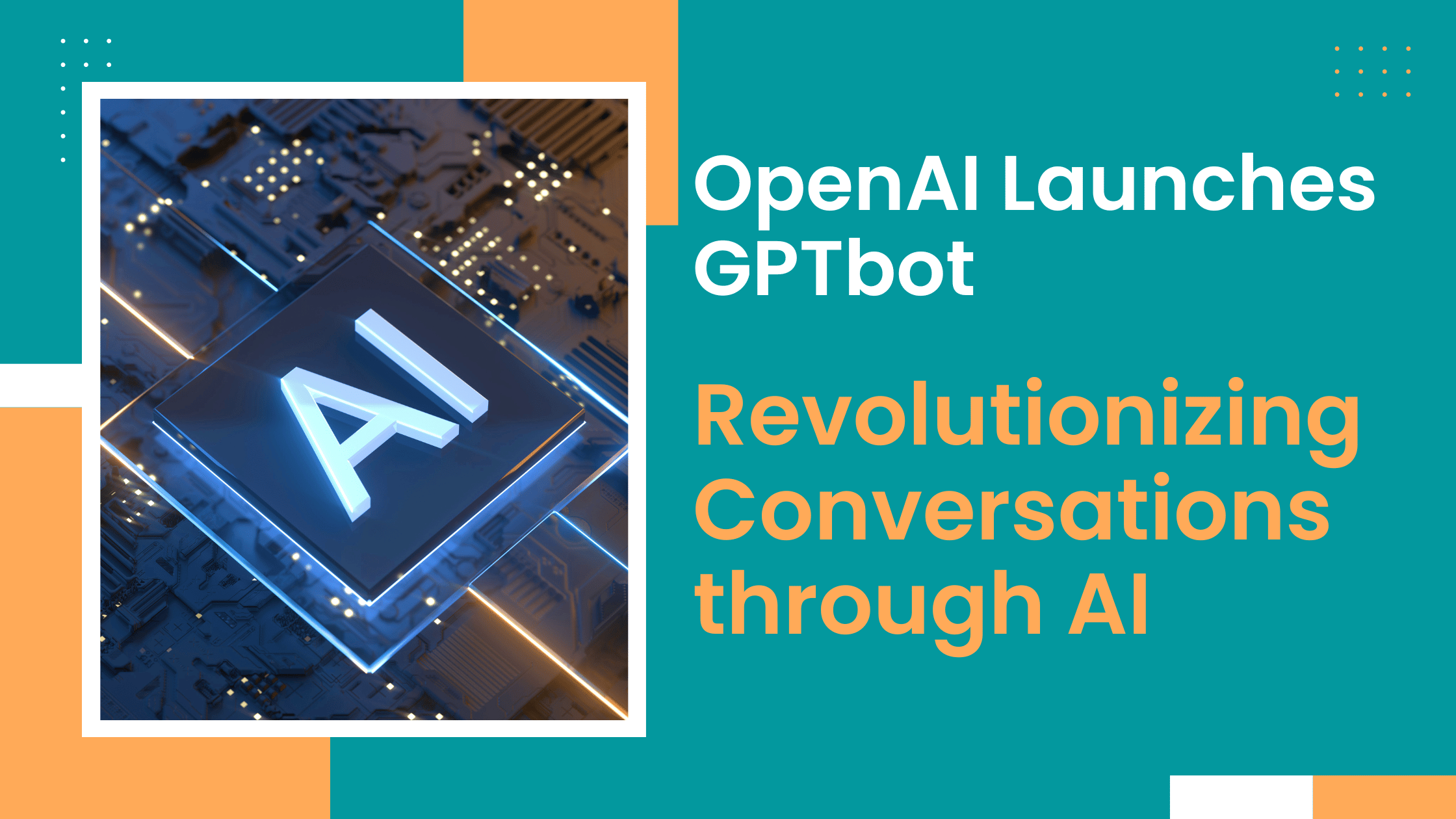
OpenAI Launches GPTbot: Revolutionizing Conversations through AI
Gone are the days of struggling to find the right words or getting stuck on a sentence. Evolving AI tools will effortlessly churn out text that would make Shakespeare jealous. Imagine a world where computers can generate human-like text, understand context and nuances, and even expand creative writing possibilities. Sounds like something out of a sci-fi movie, right? Well, thanks to OpenAI, this futuristic dream has become a reality with the introduction of GPTbot.
In a groundbreaking move, OpenAI has unveiled its latest innovation, GPTbot, a conversational AI powered by the advanced GPT-3.5 architecture. This cutting-edge technology promises to revolutionize the way we interact with AI, enabling more natural and fluid conversations across various applications. In this article, we’ll delve into the features of GPTbot and explore how users can effectively restrict access to maintain a controlled and secure environment.
Read More- Top 6 Best SEO Chrome Extensions for WordPress Design and Development
Introducing GPTbot: A Leap Forward in Conversational AI
GPTbot builds upon OpenAI’s GPT-3 framework, which has already demonstrated remarkable abilities in generating coherent and contextually relevant text. With GPTbot, these capabilities are harnessed to facilitate dynamic and engaging conversations. From customer support and virtual companions to content generation and brainstorming, GPTbot’s potential applications are vast.
The system’s ability to understand context, tone, and nuances in language enables it to hold conversations that closely resemble human interactions. Its responses can range from concise and factual to creative and imaginative, making it a versatile tool for diverse scenarios.
How to Gain Access to GPTbot
GPTbot not only generates human-like text but also expands creative writing possibilities. It’s like having an AI co-writer who never runs out of ideas. Need a plot twist for your novel? GPTbot has got it. Looking for that catchy tagline for your new campaign? GPTbot will deliver.
The possibilities are endless. But OpenAI has decided to limit access to this mind-blowing technology. Can you believe it? They are actually giving us reasons behind this decision.
According to OpenAI, one of the main reasons for restricted access is the concern about potential misuse. Apparently, they want to prevent any unethical behavior that could harm society.
How can we actually gain access? Well, OpenAI has set up selection criteria, evaluating applicants based on their qualifications and intentions. It’s like applying for the best club in town, but instead of your dance skills, they’re looking for your reasons to play with GPTbot.
They want to make sure they’re giving it to people who will not only use it responsibly but also push its capabilities to the limit. To gain access, you’ll have to go through an application process. Once you’ve submitted your application, OpenAI will evaluate it based on its standards.
Controlling Access to GPTbot: Striking the Balance
- Access Control through API Settings:
OpenAI has incorporated features within the GPTbot API that allow developers to fine-tune the behavior of the AI. By setting parameters for response length, tone, and content relevance, developers can tailor GPTbot’s output to align with their application’s requirements. This level of customization ensures that GPTbot’s responses remain consistent with the desired purpose and tone.
- Content Filtering:
OpenAI also offers a content filtering mechanism that enables users to prevent GPTbot from generating inappropriate or sensitive content. This feature proves crucial in applications where maintaining a safe and respectful environment is paramount.
By integrating content filters, developers can mitigate the risk of inappropriate outputs and uphold ethical guidelines.
- Contextual Safeguarding:
Understanding the context of a conversation is key to preventing misinterpretations or misinformation. GPTbot allows users to provide a system message at the beginning of each conversation, guiding the AI’s understanding and steering the conversation in the intended direction.
This feature helps maintain coherent and focused dialogue, reducing the chances of unintended tangents.
- Constant Iteration and Improvement:
OpenAI is committed to refining the capabilities of GPTbot through ongoing research and development. Feedback from users plays a crucial role in identifying areas for improvement and ensuring that GPTbot’s responses align with user expectations. OpenAI’s iterative approach ensures that AI evolves responsibly and remains a valuable tool in various contexts.
Conclusion: Shaping the Future of Conversations
OpenAI’s launch of GPTbot marks a significant step forward in the realm of conversational AI. Its ability to engage in meaningful and contextually accurate conversations opens up new avenues for applications across industries.
By providing users with the tools to restrict access and tailor interactions, OpenAI aims to strike a balance between innovation and responsibility, ensuring that GPTbot remains a valuable asset in the technological landscape. As developers and users harness the potential of GPTbot, it is crucial to approach its deployment with an awareness of its capabilities and limitations, ultimately shaping a future where AI-powered conversations are both transformative and controlled.
Search engine optimization services improve the visibility and organic search rankings of websites. SEO experts utilize strategies like keyword research, on-page optimization, link building, and content creation to help businesses drive more targeted traffic to their websites and increase online visibility.
Read More- What Google’s New Policy Tells Us About A.I. Generated Content





















